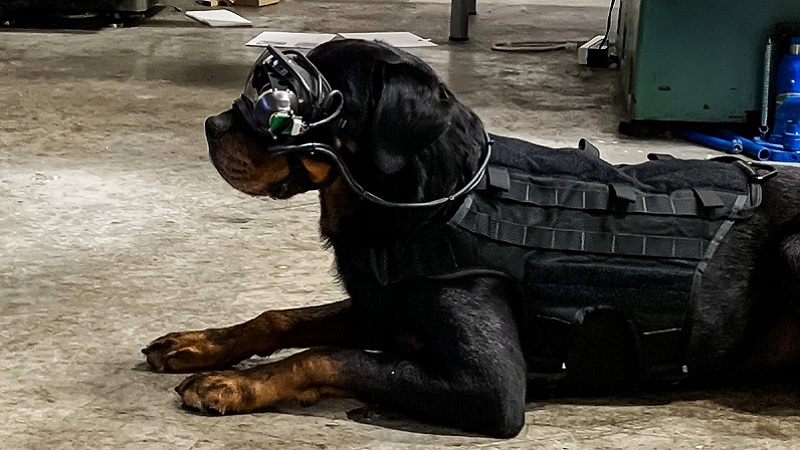
The U.S. Army is looking to equip military dogs with augmented reality (AR) goggles to help keep human soldiers out of harm’s way.
In the field, military working dogs are used to scout areas for explosives devices and hazardous materials and assist in rescue operations, but giving the dogs commands can put soldiers in harm’s way. To change that, the Army is using funding from the Small Business Innovation Research (SBIR) program to develop AR dog goggles. The project, which is managed by the Army Research Office (ARO), will use technology developed by Seattle-based Command Sight. The goggles will allow soldiers to give the dogs directional commands while staying remote and out of sight.
Command Sight Founder A.J. Peper said initial feedback from his proof of concept was, “the system could fundamentally change how military canines are deployed in the future.”
Peper explained that the goggles are designed to give each dog a visual indicator that lets soldiers point the dog to a specific spot and lets the dog react to the visual cue in the goggles. In a press release, the Army said the soldier can see everything the dog sees to provide it commands through the glasses.
“Augmented reality works differently for dogs than for humans,” said Dr. Stephen Lee, an ARO senior scientist. “AR will be used to provide dogs with commands and cues; it’s not for the dog to interact with it like a human does. This new technology offers us a critical tool to better communicate with military working dogs.”
Currently, the prototype is wired and requires keeping the dog on a leash. But, for the next phase of development, researchers are working to make the technology wireless.
“We are still in the beginning research stages of applying this technology to dogs, but the results from our initial research are extremely promising,” Peper said. “Much of the research to date has been conducted with my rottweiler, Mater. His ability to generalize from other training to working through the AR goggles has been incredible. We still have a way to go from a basic science and development perspective before it will be ready for the wear and tear our military dogs will place on the units.”
The technology uses goggles that military dogs have already been wearing for protection in inclement weather and aerial deployments. Peper looked to use a technology the dogs were already comfortable with because it makes adoption of the AR tech easier for both canines and humans.
By leveraging a product the dogs are already used to wearing, Peper said it makes the technology adoption easier for both the dogs and the handler.
The Army reported that the Command Sight team has completed Phase I of the SBIR and was asked to continue to Phase II. The Department of Defense Rapid Reaction Technology Office is providing funding for Phase II of development. With the funding, Command Sight will work with Navy Special Forces to build prototypes to test on the Navy’s military working dogs. The Army explained that each dog involved in the testing received a 3D scan to get dimensional data to understand where to place optics and electrical components. Once they have developed a wireless prototype, Command Sight will gather additional user feedback and revise the project for manufacturing.
“We’re excited about getting this into the hands of the Soldier, hopefully in just a few years,” Peper said.
